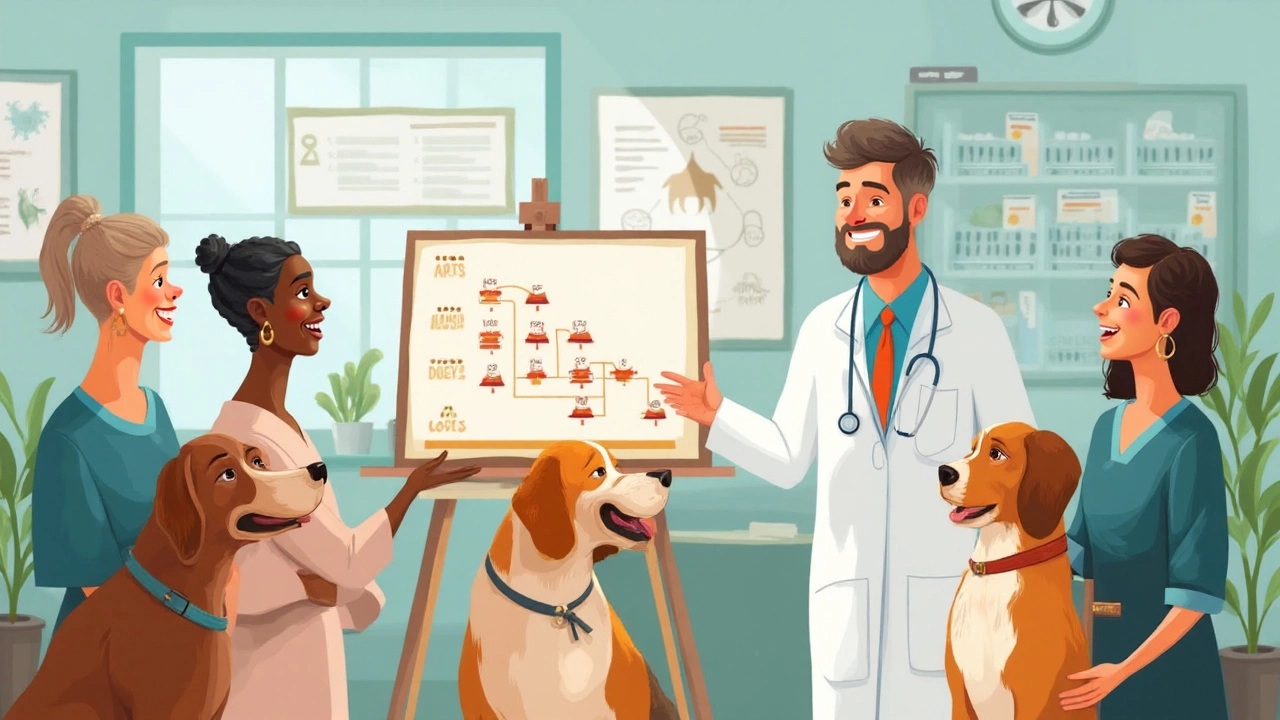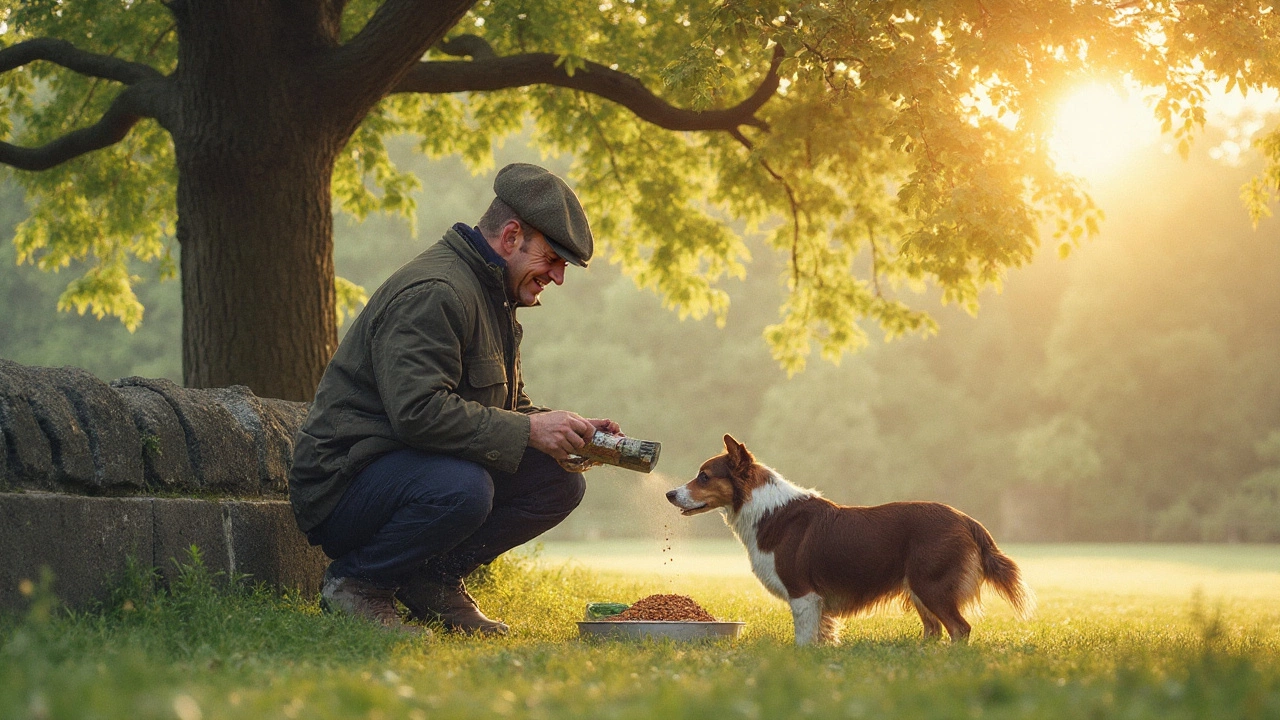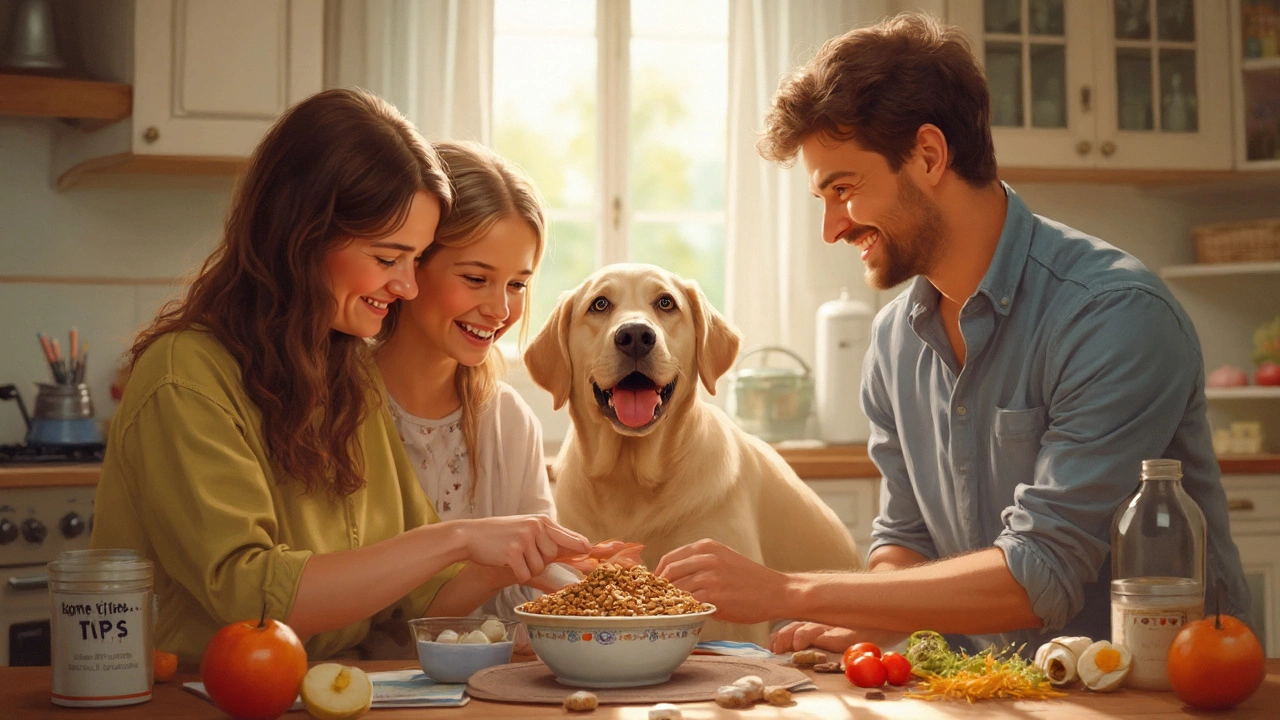It’s one of those questions that instantly splits a room of dog owners. Some shrug and say, “My dog’s always had one big meal—never had a problem!” Others grab the kibble bag and rattle it twice a day without fail. So, is it really OK to feed dogs just once a day?
Why Feeding Frequency Stirs Debate Among Dog Owners
All right, let’s get real. You’ll find people swearing by any number of feeding routines—big breakfast, split meals, fancy slow-feed dispensers. But feeding frequency isn’t just a matter of habit; it’s about your dog’s health. Most people feed adult dogs twice a day, but a survey from the American Kennel Club in 2024 showed that about 13% of owners stick to a single meal a day for their pets. Some folks claim their dogs even seemto thrive with this routine—energy up, weight down, coats shining. But anecdote isn’t proof.
Here’s where it gets tricky: feeding once might work well for some dogs, but not for all. Large breeds, working dogs, or pups with medical issues can have more sensitive needs. A study out of the University of Arizona looked at 24,000 dogs and made waves in the pet world. It found a small link between once-daily feeding and slightly better cognitive scores and overall health, especially for older dogs.
But before tossing the dog bowl after dinner, you need to know why some experts still recommend splitting meals. For dogs with sensitive stomachs, prone to bloat, or puppies, that one meal could mean trouble.
What Science Says About Once-Daily Feeding
Let’s dig into the numbers. Research goes back and forth on the best dog feeding routine, but certain facts stand out. Dogs are more like scavengers by nature—not true wolves, but not quite cows grazing all day. They do have the ability to handle longer gaps between meals, but there are exceptions.
If you jump into the University of Arizona’s study details, they tracked dogs with owners who kept solid records. Those dogs eating once a day had a slightly lower risk of some age-related illnesses. But hold on. We’re not talking miracles—just a few percentage points. Dogs fed once or twice daily still lived about the same length, and the happiest dogs had owners who were consistent with their routine—whatever it was. So, sudden shifts in feeding times or skipping meals wasn’t good news for stomachs or mood.
Here’s something wild: in the wild, African wild dogs and wolves sometimes eat a giant meal, then fast for a whole day. Domestic dogs, though, have different lives and genetic quirks after thousands of years of living with us. Vets at the Association of American Feed Control Officials warn that abrupt changes or limiting meals for active breeds can trigger hypoglycemia (low blood sugar), especially for toy breeds like Yorkies or Chihuahuas. Older dogs sometimes get tummy upsets on empty stomachs—hello, yellow bile on the carpet.
| Feeding Schedule | Possible Benefits | Potential Risks |
|---|---|---|
| Once a Day | - Easier schedule - May help with weight management - Simpler if you’re busy |
- Higher risk of hunger pukes - Not suitable for some breeds - Can encourage gobbling or bloat |
| Twice a Day | - Less stress on stomach - More controlled blood sugar - Good for active/older/sensitive dogs |
- More work for you - Some picky eaters ignore a meal |
Science isn’t saying one size fits all. You’ve got to weigh your dog’s age, breed, activity, and health. Does your dog scarf food so fast you’re worried about choking? Or do they nap all day while you’re at work? Think about those details.

Signs Your Dog Is Thriving (Or Not) On Their Feeding Schedule
So, how do you actually *know* if your dog is happy and healthy eating once a day? Watch for the stuff that matters. You want to see glossy fur, steady weight, happy energy, clear eyes, and not-too-smelly breath. Any sudden hunger or mood swings? Unusual tiredness, vomiting, diarrhea, clinginess, or pacing mean the routine may not be working.
If your dog starts to get sick more often, skips meals, or becomes ravenous at mealtimes, there might be an underlying issue or just hunger frustration. Senior dogs, especially, can lose muscle if not given enough protein in one sitting. Toy breeds can dip into low blood sugar shock if left hungry for too long.
One handy tip—keep track of your dog’s body condition score (BCS). It’s like a human BMI but for dogs. You should be able to just feel the ribs with a light touch, but not see them poking out. Dogs getting only one meal might wolf it down so fast they get gas, hiccups, or even risk of something called gastric torsion (bloat)—far more common in deep-chested breeds like Great Danes and Dobermans.
Routine is your best friend. Animals, even us, love knowing what comes next. Feed at the same time every day. Bonus perk: regular feeding makes bathroom trips predictable, which any apartment-dweller can appreciate. If you do want to switch from twice to once daily feeding, talk to your vet first, and make the change slowly. Sudden swaps can lead to digestive upsets and sad, hungry stares.
When Once-Daily Feeding Works—And When It Doesn’t
All right, who actually does well on just one meal a day? Let’s break it down. Adult, healthy dogs who aren’t super active often do fine. Office-dweller with a sleepy bulldog? He might love lounging all day, saving his appetite for a big dinner. Older rescue dogs can sometimes benefit from the “one and done” feeding style—a brisk walk, then a peaceful evening after the main event.
But it’s not for everyone. Nonstop pups, pregnant or lactating females, puppies, and dogs on medication (like for diabetes) need frequent, small meals. Their tummies just can’t handle huge gaps. Working dogs burn tons of calories, and those on special diets prescribed by a vet might have to eat small, timed meals for their medication to work.
If you’ve got a breed at risk for bloat, rethink the one-meal approach. Splitting food reduces risk. And if you’re dealing with a picky eater, sometimes offering a single meal can actually get them interested—but if not, don’t push it. Walk away, remove the dish, and try again at the next scheduled meal.
Here’s a quick cheat sheet:
- Fine for: Adult, healthy dogs used to big meals, chill lifestyle
- Avoid: Puppies, senior dogs with health issues, toy breeds, dogs on meds, prone-to-bloat breeds
Consistency wins here. If your dog eats well, stays happy, poops on time, and your vet signs off—it’s probably okay. But never skip vet checkups, and always bring up any big diet changes.

Smart Tips For Feeding Dogs On A Once-A-Day Schedule
So, you’ve decided one meal fits your routine best. How can you make it as healthy and safe as possible? First, quality matters. Use the best food you can afford—avoid cheap fillers and artificial colors. Go for meals with real meat, plenty of protein, and digestible carbs.
Try to feed at the same time every day—morning if you want bathroom breaks to happen before work, evening if you’re around for late-night pee trips. Stick to calm times, and don’t feed right before or after strenuous play. Big meals plus wild zoomies equal risk of bloat; vets recommend waiting an hour before and after exercise.
Here’s a neat hack: use puzzle feeders or slow bowls if your pup has a habit of gulping. These turn mealtime into a game and slow down eating, lowering risk of tummy problems. Keep water available all day—dogs fed once can get more thirsty.
Want more ideas? Check the guidelines below:
- Keep a dog journal—notice changes in weight, poop, coat sheen, or mood
- Mix in some high-fiber veggies (like green beans) to help with satiety
- Be wary of treats: one big meal means treats add up fast
- If traveling, bring measured meals to avoid guesswork
- If you suspect your dog is getting too hungry, try splitting the meal but keep the caloric intake the same
- Always watch out for signs of bloat: hard belly, pain, drooling, restless pacing
- If you have more than one dog, make sure mealtime is calm to reduce competition and stress
Your vet is your best partner for nailing the perfect feeding plan. No two pups are the same. Some act like they’re starving on once-a-day; for others, it’s the highlight of their day. Look for a routine that keeps tails wagging, bodies healthy, and household chaos minimized.
